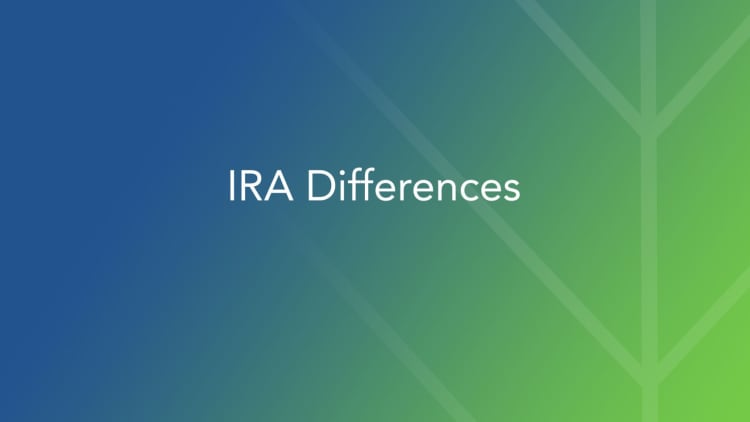For some savers, the lure of moving assets to a Roth individual retirement account from a traditional IRA or 401(k) plan often boils down to the tax-free income it will deliver in their golden years.
Yet there are some less obvious reasons for certain retirees or retirement savers to consider doing a so-called Roth conversion.
First, though, the basics: Unlike traditional IRAs whose distributions are taxed, their Roth counterparts generally come with tax-free distributions once you reach age 59½. They also come with no required minimum distributions — annual amounts you must take starting at age 70½ — during your lifetime.
However, contributions aren't tax-deductible the way they are with traditional IRAs or 401(k) plans. That means if you move pre-tax money from one of those accounts to a Roth IRA, you must pay taxes on the amount moved — and have a plan for paying the taxes due.
Right now, though, federal taxes are relatively low, which would mean paying less than you might down the road if you were to wait to do a Roth conversion.
"It's more likely that taxes will rise in the future, not go down," said CPA Jeffrey Levine, CEO of BluePrint Wealth Alliance in Garden City, New York, during a Roth IRA educational session at Schwab's IMPACT conference in San Diego.

Also, while there are contribution and income limits that apply to direct contributions made to a Roth IRA, those restrictions don't exist for assets transferred from other qualified retirement accounts.
At the same time, however, there may be reasons not to do a conversion or to limit how much you convert in one year. And, because some of the rules can get confusing, it's wise to get professional guidance to ensure the move makes sense for your situation.
Additionally, it should be appropriate within the context of your overall financial plan, Levine said.
Here are some of the situations, discussed by Levine, where a Roth conversion might be right for you.
Relocating
While you're subject to the same federal tax rate regardless of where you live, the same can't be said for state taxes.
Some retirees in search of lower taxes head to states with no income tax, such as Florida. Yet there can be many reasons for retirees to relocate that have nothing to do with taxes — i.e., moving to be near grandchildren, Levine said.
Regardless of the reason, if your new home would be in a state with a higher tax rate than you have now, converting money to a Roth IRA from a 401(k) or traditional IRA would mean being able to avoid that new, higher rate altogether when you take money out.
On the other hand, if you're heading to a low- or no-tax state and are considering a Roth conversion, it might make sense to wait until after the move.
The "widow penalty"
Even for retired couples with more modest income, a Roth rollover can make sense if it's anticipated that one spouse will outlive the other.
The reason is that after the death of one spouse, household income may not drop all that much. When that's the case, being taxed as a single filer generates more in taxes than filing jointly as a married couple.
For example, income of $60,000 puts a married couple in the 12% tax bracket. A single filer with that income would be in the 22% bracket. Additionally, the standard deduction for single filers is half that for married couples: $12,200 vs. $24,400.
That possible change in filing status is an important input for whether to do the conversion or not.Jeffrey LevineCEO of BluePrint Wealth Alliance
So, the idea is that if the couple did a Roth conversion, the surviving spouse could have some tax-free income instead of paying at a higher rate.
"That possible change in filing status is an important input for whether to do the conversion or not," Levine said.
Retiring early
While regular IRAs and 401(k) accounts generally come with a 10% penalty if you withdraw money before age 59½, the rules are slightly different for Roth IRAs.
Direct contributions — which, again, are after-tax — can be withdrawn at any time penalty-free. The earnings, though, must remain untouched to avoid the penalty (and taxes).
For money that's converted to a Roth IRA, you can avoid the penalty as long as you leave it alone for five years. As with direct contributions, however, the earnings remain off-limits until age 59½ or you'll pay the 10% penalty and taxes.
More from Your Money Your Future:
Here's how much you can save toward retirement in 2020
How holiday travelers plan to pay for their trips
Don't miss the tax advantages of this savings account
Small-business owners
If you're a small-business owner who can take advantage of the 20% deduction on so-called pass-through income — that is, income that flows from the business through your individual tax return — a Roth rollover may help reduce the amount of tax you pay.
For taxpayers who are eligible for that deduction, the rule is that it applies to the lesser of either your taxable income (less capital gains) or your qualified business income, Levine said. So the more income you can apply that deduction to, the less you'll pay in taxes.
"Generate more taxable income, and your deduction also increases," Levine said.
For illustration, he offered this scenario: Say a married couple filing jointly has $200,000 in business income. Assume that after applying their various allowed deductions — excluding the 20% pass-through one — their taxable income is $150,000.

Because the tax break applies to the lesser of those two numbers, the 20% applies to $150,000. So the value of the deduction at that point would be $30,000.
Now, say that when they saw they could only apply the 20% to the $150,000, they decided to convert $50,000 from a traditional IRA to a Roth. That additional income would push their taxable income up to $200,000.
So, the 20% deduction could apply to the $200,000. And that would deliver a bigger tax break: $40,000.
And while this does mean the couple would have taxable income of $160,000 for that year compared with the $120,000 they'd have without the conversion ($150,000 less the $30,000 pass-through deduction), the difference between those two taxable numbers is $40,000.
In other words, that $50,000 conversion was reduced by $10,000 due to the 20% deduction.






